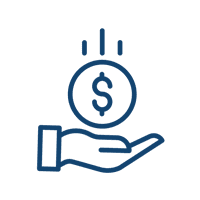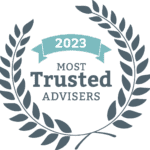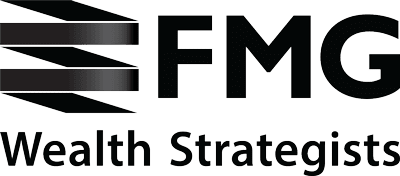Cashflow and Debt
Discover How to Become Highly Successful at
Channelling Your Cashflow – to have your money working for you
And
Detonate Your Home Loan Debts – to save thousands of dollars, shred years off your home loan, and start to experience peace of mind and freedom like you’ve never known.
Contact us for a FREE consultation and assessment of your cashflow and debt situation

Cashflow and Debt Solutions

Wealth Education
Cashflow and Debt Advice Solutions
Whether you want to build a realistic debt payoff strategy, plan a secure future for yourself and your family or want to retire confidently sooner, understanding your money and your numbers is essential to achieving your goals.
Here’s how we can help 💪
A good cash flow and debt forecast will help you to monitor when you have money coming in, and going out. It can help you identify when you will have extra cash available or are likely to experience shortages, and also provides warning signs to avoid future financial problems.
Having a strong grasp on the financial forecast will help you make decisions moving forward.

Plan and monitor your cash flow and debt
CHOICES. We are going to show you how to make the best choices you can with the cashflow you have available.
DEBTS. Help ensure your cashflow and debts are structured efficiently to ensure you pay off your debt in the shortest time possible.
BORROWINGS. Show you ways to reduce the cost of your borrowings.
SAVING. Feel in control of your money and more financially confident overall. Also, feel secure about meeting your expenses, and paying off your debts whilst saving time and money. Start saving for other goals and stop focussing on your day to day money, and start planning for your future.
RETIRING. Ensure you are debt free by retirement, as well as ways to reduce tax, create wealth while focusing on paying off your home loan.
Get more tips on cashflow and debt solutions here
TIP #1. Reduce your outgoings
Effective cash flow and debt management also means keeping outgoings to a minimum. Look for opportunities to save money by streamlining practices and reducing unnecessay costs, for example:
- Minimise energy costs by installing energy efficient products or by using some utilities outside of peak electricity usage periods
- Identify areas where you can reduce wastage, review insurances, phone and internet service contracts when they become due for renewal to ensure you’re getting the best deal
- Negotiate wherever you can on whatever you can
- Stop monthly subscriptions you are no longer using
– just to name a few..

TIP #2. Build cash reserves
Creating cash reserves will give you the confidence and finances you need to grow your wealth and help you prepare for any unexpected expenses. It will also allow you to take advantage of future investments or investment opportunities to buy appreciating assets that will eventually create an additional income.
TIP #3. Improve your financial skills and get expert advice
Many people struggle to understand their everyday cash flow and debt financials. Expanding your knowledge and financial skills can help improve how you manage your cash flow and debt. Consider attending a workshop to improve your financial knowledge and get advice from us. Financial advise and wealth coaching experience is a must.

TIP #4. Use technology to help you
Many people are moving towards cloud-based cashflow and debt management solutions to improve their productivity and efficiencies. These systems can make it simpler for you to get real-time visibility of your cashflow and reduce your debt more quickly.
The best budget calculator and worksheet you will ever use.
More information
For more tips and advice on managing your cashflow and debt or if a long-term wealth strategy to build and protect your wealth is important to you, call us on 08 7111 0022 or email to book a time with us.
Our Top 5 Debt Management Strategies
Owing money or falling behind on repayments can be stressful. The good news is there are steps you can take to take control of your cash flow and debt to relieve the financial pressure.
Take control of your liabilities
💰 1. Know what you owe
The first step is to get a clear picture of what you owe.
Make a list of all your debts – include credit cards, loan repayments, unpaid bills, fines and any other money you owe.
- Showing:
How much each debt is
The minimum monthly repayment (if any)
Then add up all the debts to see how much you owe in total. It may be confronting, but remind yourself that you’re taking charge of your money. And that’s a good thing.
💰 2. Work out what you can afford to pay
The next step is to work out how much you can afford to pay towards your debts.
Compare money in and money out
The easiest way to do this is to do your budget.
List all the money you have coming in each month (income), such as salary or benefits. Then list all the money going out (debts and expenses), for things like food, rent or mortgage, credit cards, electricity, school expenses, phone and transport, etc.
=> Tally these up, then compare money in and money out.
💰 3. Maximise your entitlements and find savings
Check if you’re eligible for extra Government financial assistance. Services Australia have a guide to help you find eligible payments.
If you have more money going out than coming in — it’s time to make some choices.
Think about what are:
‘NEEDS’ (can’t do without)
‘WANTS’ (could do without, at least for a while)
Identify some expenses that you can cut or reduce. Be realistic — don’t make it impossible to stick to. See simple ways to save money for ways to reduce your spending.

Cashflow and Debt Management Strategies cont
💰 4. Prioritize your debts
Work out which debts are your priority debts and try to pay them first. Priority debts include:
- Rent or mortgage payments
- Council rates and body corporate fees
- Electricity, gas and water
- Car repayments — if you need your car for work or essential travel
If you can’t keep on top of these you can request financial hardship. You could also request financial hardship for lower priority debts like:
Internet and phone bills
Credit cardsPayday loans or consumer leases
The National Debt Helpline has a step-by-step guide and can help you to prioritize your debts.
💰 5. Build a cushion
Find any surplus you have each week to build an emergency fund. This will provide a financial and emotional safety net to cover any unexpected expenses or future changes to your income.
💪 Get help if you need it
Before you jump into anything, talk to a confidential financial counsellor, contact them here. They can explain your options and help you make a plan.
Whatever your financial position
It is important to know exactly where you are and take steps to improve your cashflow and reduce your debt. A monthly – quarterly review will keep you on track and allows you to make adjustments quickly.
If you need help, a simple chat might just be all it takes. Reach out to us anytime on PH: 08 7111 0022 or book a chat here

Arthur Panagis
Author, Founder, Wealth Coach and Financial Strategist

B.Bus (Accountant)
Grad Dip (Financial Planning)
Professional Certificate in Self Managed Super Funds
ASX Listed Equities Accreditation
Tax (financial) Advisor
Subscribe to our Weekly Tips here
Download our FMG App
Run projections
Know your current asset number
Do a savings accelerator
Financial education resources
Plus more

iOS

Google store
Contact us for a FREE consultation and assessment of your cashflow and debt situation
